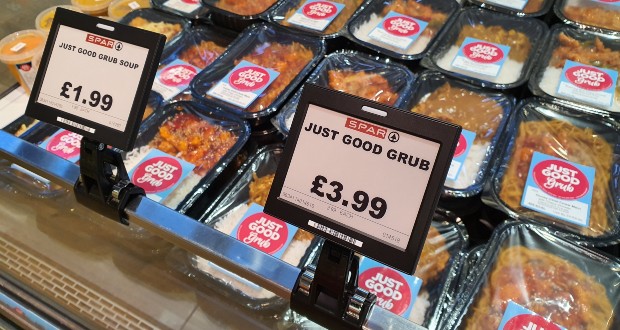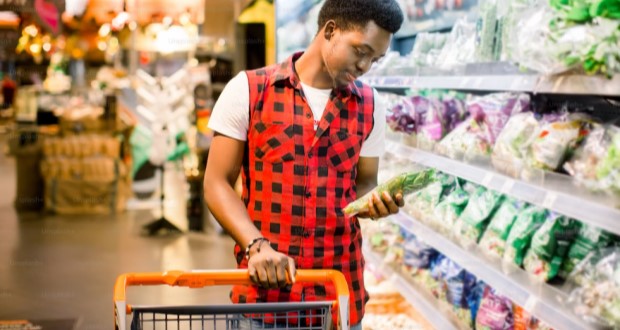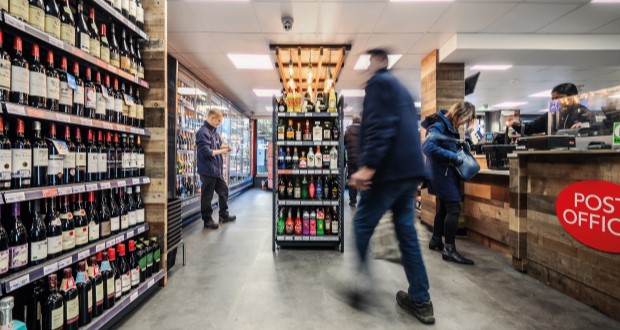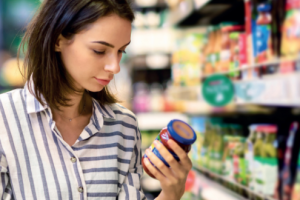But with those challenges will come opportunities and small retailers will be able to fall back on their traditional strengths of agility and strong community ties in order to adapt and thrive as the year progresses.
Business costs
Foremost among the threats are continuing high business costs, the experts say. “The cost of energy and money remain unduly expensive and wages and materials costs are rising,” says consultant Scott Annan. “There will be many challenges to overcome throughout the year, with increases set to come into effect for the minimum wage and business rates,” adds Victoria Lockie, head of retail at Nisa.
“Retailers are having to show more flexibility than ever before to provide a strong proposition that differentiates them from local competitors while also dealing with rising costs.”
This view is shared by retail consultant John Heagney, of the C-Store Collective, who says: “Wages and energy will add further pressure on retailers. The minimum wage increase of 9.8% or £11.44 from 1 April has to be paid for and some retailers will be looking at reducing staff hours to make up the shortfall. Energy costs are still too high and the impact of Russia’s invasion of Ukraine is still being felt.
With increasing amounts of refrigeration required to satisfy the demands of consumers with fresh and frozen goods, it is hard to economise apart from having the most energy-efficient equipment.”

Cautious consumers
Although inflation is beginning to ease and should continue to do so throughout 2024, it will remain difficult for retailers to offset these increasing overheads by simply putting up prices.
That’s because shoppers continue to be impacted by the cost-of-living crisis and are likely to remain cautious.
Mike Fitton, head of franchise for Southern Co-op Welcome, says: “Although interest rates are still high and a lot of fixed-rate mortgages will be ending this year, we are seeing a drop in inflation. Consumer confidence will slowly improve, but they will still be looking for value in stores.”
A further economic challenge will come from changes within the tobacco and vaping categories, predict the experts. Ian Taylor, retail director at Spar UK, says: “A decline in tobacco sales and possible changes to vape legislation could change the success of the category.”
Annan adds: “Vaping is providing 50% of many retailers’ store profit. This is unsustainable and a clear business health risk, as vaping will be strictly regulated this year and disposable products are likely to be banned.”

Vape legislation
That view is echoed by Heagney. “There will be challenges with the vape and alternative nicotine products category that has been very good for convenience retailers in recent years and has helped by adding in substantial gross profit in terms of both cash and percentage margin as tobacco sales declined.
These good situations rarely have longevity. It is clear that legislation is going to have a substantial impact, along with the mooted plans to ban single-use vapes and also to ban vape merchandising on shop floors and counters that seems likely to happen and will further depress the category.”
Crime has also been a huge issue throughout the past 12 months and the situation looks unlikely to improve any time soon.
“We are in the midst of an epidemic, with shop theft not being taken seriously enough by far too many people who could make a real impact,” says Heagney, who wants to see tougher action from both the police and the judiciary.
“Shop workers must feel and be safe and protected from harm.”
Remain vigilant
Fitton adds: “We can’t get away from the theft and violence threat. We must continue to press the government for action on this matter.” And Taylor at Spar urges: “As crime continues to increase, independent retailers need to remain vigilant and consider what investments need to be made to prevent this from happening.
Engaging with local MPs will be important during 2024. Alerting them to issues in their constituency and the positive impact convenience stores have in their
constituency or ward will encourage them to act on your behalf.”

While crime has long been a major threat to the independent sector, so too has continued competition from the grocery multiples, especially as more of them have moved into the convenience space.
Says Heagney: “The ongoing march of the UK multiples continues and especially the discounters such as Aldi and Lidl, who both have very substantial new store opening plans – while Tesco, Sainsbury, Morrisons and Asda are embedded into convenience, mainly through acquisition. By stealth, Aldi and Lidl have jumped right into this space with an ever-growing convenience offer, and this will continue.
Multiple threat
“High overhead costs incurred by independents in real terms purely due to scale compared with the ultra-efficient discounters and multiples – who with massive buying power will always buy better and be more efficiently – is a huge and ongoing threat to every independent.”
Despite these headwinds, industry leaders remain optimistic about the prospects for 2024, largely thanks to the well-established resilience of independent stores over the years and the agility that enables them to embrace new ideas quickly.
“The convenience sector is dynamic and is constantly innovating and we are confident it will continue to adapt to the ever-changing needs of shoppers,” says Taylor.
“The shift in consumer behaviour and how they shop opens up a huge opportunity for the sector. Shoppers have got used to using their local convenience stores in a different manner and speedy developments in retail technology have meant that shopping and payments can be done in a variety of ways.”

EDGEPoS electronic shelf edge labels at Spar Loughbrickland
Fitton too believes technology will be key. “Expect to see a big increase in installations of electronic shelf-edge labels and self-checkouts,” he says, “although never forget to keep the in-store service uppermost in your colleagues’ minds. Quick commerce for deliveries within the hour will continue to grow.
“We at Southern Co-op are introducing a new planogram system this year that will use AI to produce planograms quicker that better reflect individual stores’ sales and identify trends that all our franchisees will benefit from.”
Tech solutions
Despite its rapid growth, food-to-go remains an under-exploited opportunity for a large number of independent stores and one that could provide highly profitable future growth.
Says Fitton: “Food and drinks-to-go have grown massively over the last few years, but I still see stores that are missing out on great profit opportunities.” Taylor at Spar agrees.
“Food-to-go remains an area that stores with the right footfall need to offer, so developing solutions that retailers can execute is something that needs focus. The key for retailers now is personalisation and blending digital and physical experiences to meet consumers’ expectations.”
Developing food-to-go
Annan thinks retailers need to develop their own, bespoke “foodservice” offers, seeing this as the principal profit opportunity for 2024.
Although executing such a strategy takes investment, innovation and time to develop, he believes it is achievable.
“There are many UK and Irish independent retailers with a more than 35% sales contribution from proprietary fresh food, delivering a store gross profit of more than 35%. It can be done with effort and will.”
“But one of the most important reasons for optimism is the fighting spirit of the independent retail sector and those who support it.
“The convenience sector is a tight-knit sector and has shown that in many cases it can be resilient,” says Taylor. “Independent retailers have built a great community and continue to share best practice. By using their networks, symbol groups and trade associations, they will continue to keep the sector strong.”

Shopping local
His views are echoed by Dawood Pervez, managing director at Bestway Wholesale, who says: “The biggest opportunities facing the sector include embracing the local and personalised experience that independent convenience stores can offer – a highly bespoke and community-focused experience that larger chains often struggle to provide and the value of ‘shopping local’ is now more widely understood. It’s not just the price on the tin!”
Heagney says: “This sector never stands still. We will see the stronger retailers grow more and the weaker ones fall by the wayside. There is no room for any complacent retailer.
“Shoppers have come to expect high standards and the major multiples in a strange way have helped the independent and ‘miniple’ [small multiple] retailers raise their game and deliver a better level of overall service.

Radical changes
“The gulf between good retailers and weak ones is growing and shoppers have many options. They will spend their hard-earned money where they get the best service in great stores.” He adds: “This industry is no stranger to challenges and has a fine reputation of working each one through and coming out the other end in a better place than previously.”
Annan, however, provides a word of warning: “The overarching threat is that independent retail’s market share is 1.4% and will continue to decline towards 1% without retailers and their supply-chain providers making radical changes. Retailers should look closely at their retail strategy now.”
VIEW FROM THE FED
Muntazir Dipoti, national president, Federation of Independent Retailers (the Fed)

This is set to be another tough year for independent retailers, with continued pressure on consumers’ spending power and rising costs,” says Muntazir Dipoti, national president at the Federation of Independent Retailers. “However, hopefully, as we move through the year, things will ease.
There are some key sporting events coming up, including the Euros and the Olympic Games, which should hopefully drive consumer spend and create a feelgood factor.
Sadly, retail crime will continue to be a major issue. We will continue to push the police for faster response times and the government for tougher punishments. The biggest opportunity independent retailers have is their agility to make the necessary changes that cement their positions in the hearts of their communities.”
WHAT THEY SAY
Food-to-go continues to be popular for convenience stores and we are seeing more and more retailers putting their efforts into creating strong food-to-go propositions for their customers.”
Victoria Lockie, head of retail, Nisa
With the pandemic appearing under control, consumers will now turn their minds to matters that affect the planet – such as sustainability and food waste – so expect more progress on this.”
Mike Fitton, head of franchise, Southern Co-op Welcome
“We know from the data that shoppers are still looking for value products, which makes investment into own-brand lines a must.”
Victoria Lockie, head of retail, Nisa
“The retailers that will thrive will be those who examine and control their businesses closely and care passionately about great service and these are crucially important planks in the strategy of driving efficiency, improving profits, and growing sales.”
John Heagney, founding partner, the C-Store Collective
“There are some great opportunities this year with both the Euros and the Olympics, so start planning now. Talk to suppliers and get your stores ready for what will be a great summer for trade.”
Mike Fitton, head of franchise, Southern Co-op Welcome
 Talking Retail Grocery and product news for independent retailers
Talking Retail Grocery and product news for independent retailers









